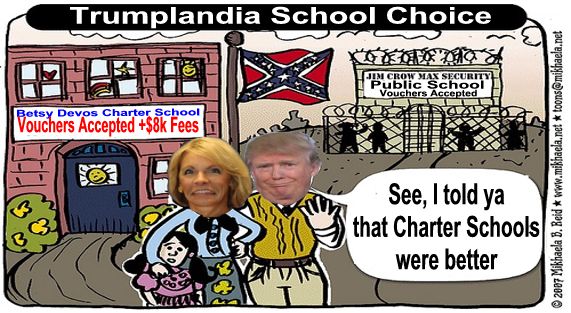What ‘school choice’ means in the era of Trump and DeVos

If President Trump and Education Secretary Betsy DeVos have made one thing clear when it comes to education policy, it is this: Their priority is expanding “school choice.” What is that, exactly?
This is a primer about the school choice movement, which supporters say seeks to expand alternatives to traditional public schools for children who have poor educational options in their neighborhoods and to give parents a choice in their children’s education.
Critics argue that using public funds to support choice schools is undermining the traditional public system, which educates the majority of America’s school-age children, and that it is ultimately aimed at privatizing the most important civic institution in the country.
Whatever the intent, the Trump administration is taking the movement into a new era, elevating it to the center of the national education policy debate after years, under presidents Barack Obama and George W. Bush, of school “accountability” taking center stage.
DeVos’s Education Department is planning to spend an unprecedented amount of public money — well over $1 billion — to expand school choice in the 2018 proposed budget, and it is said to be considering other ways to promote choice. The secretary has not been shy about expressing disdain for the traditional public school system by calling it a “dead end” and a “monopoly.”
Trump, too, has disparaged traditional public schools, calling them, in his inaugural speech, part of the “American carnage.” His pro-school-choice bent was clear when he welcomed a group of 10 teachers and parents to the White House in February: two invitees were from traditional public schools, one was from a public school that specializes in special What ‘school choice’ means in the era of Trump and DeVos - The Washington Post:


